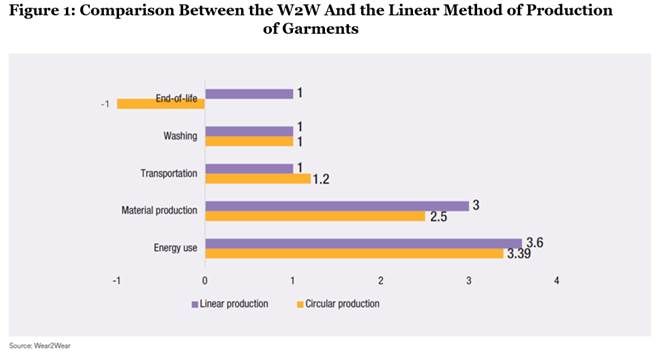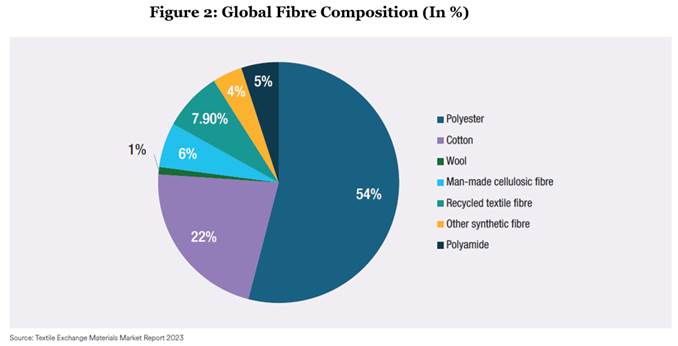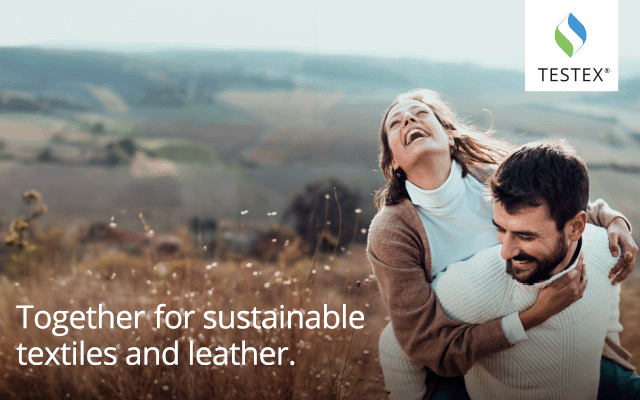To date, disposed clothing has primarily been exported as second-hand garments or downcycled due to the challenges posed by the diverse array of fibre types used in apparel production. The development of technologies for recycling clothing into new garments is still in progress.
One promising approach that many nations are considering is closed-loop recycling, which aligns with the global push towards a circular economy, particularly within the textile industry. In a circular economy, products are recycled, reused, upcycled, or downcycled to maximise resource efficiency. However, the industry’s capacity for circular practices remains largely untapped due to insufficient investment and government support.
Nevertheless, some companies and organisations worldwide have begun piloting circular textile recycling initiatives. For instance, organisations in Los Angeles are implementing circular economy principles through staff training and tailored programs developed with consultant support. Other apparel companies are also exploring similar approaches, with the efficiency of these methods being assessed through life cycle analyses. Here is a brief overview of the methods adopted by these companies.
What is a Closed-Loop Recycling Method
Closed-loop recycling is a sustainable production approach that emphasises using materials and components sourced from recycling collections or take-back schemes. Maintaining the quality of the apparel is crucial in closed-loop recycling, ensuring that garments recycled produce output equivalent in quality to the original input.
While successful pilots have been conducted primarily for polyester garments, which constitute a significant portion of global fibre composition, challenges remain in achieving fully recycled garments. Some brands utilise post-consumer waste components to recycle them into new garments. However, to date, no individual company or country has developed a foolproof solution for achieving completely recycled garments.
Wear2wear Loop Method
The initiative involves the top brands of Europe collaborating across the textile value chain to produce apparel from recycled textile materials. The technology involves all the principles of sustainability including transparency, and traceability. The clothes can be completely recycled at the end of their life cycle; thus, ensuring their cyclical nature. the process involves all the eight components of the textile value chain- right from the fibre to the washing and the disposal.
A life cycle analysis of the method revealed that the production method adopted by the W2W is little different from the linear production of apparel. As the production involves recycling the PET bottles in the first stage, the linear method involves the direct use of petroleum for the use of the polyester fibre. Although a direct comparison is not possible when it comes to the production systems; the environmental impact is clear. The current method reduces environmental pollution by 25 per cent as compared to the linear method and has more than 50 per cent effects on human health. Land use is reduced by 20 per cent and water use is reduced to 45 per cent of the original method’s use.
The Greenhouse emissions are also lower due to the recycled materials used in the process, which reduces the wastage and the emissions released while using virgin materials. In all the stages of the W2W, it was observed that the emissions are lesser as compared to the linear system of garment production. Methods used by Wear2wear reduce GHG emissions by 33 per cent, reduce the risk to human health by a staggering 51 per cent and reduce the pressure on land resources by approximately 15 per cent. The overall analysis of the W2W revealed a significantly lesser usage of raw materials and energy usage. However, it was also mentioned that the overall energy usage and the impact on the environment depends upon the kind of fibre that is recycled and the apparel.

The conclusion which comes from the analysis of the system is that it will turn more efficient as there will be more research on the kind of materials used and how will it impact the recycling process of the apparel. The recycling methods need to be assessed individually process by process; comparing it to the linear method of production will turn out to be ambiguous after some time as every stage of production will be different.

Currently, the focus of recycling methods has predominantly been on polyester and cotton fibres, with significant research and investment directed towards both producing polyester fibre sustainably and improving recycling methods. Despite these efforts, the overall share of recycled fibre has decreased by 7.9 per cent from 9 per cent.
Nevertheless, ongoing research and pilot projects aim to explore how circularity can be achieved in apparel production while minimising waste. One notable initiative is the HKRITA, for example, which is actively involved in advancing sustainable practices in the textile industry.
Garment to Garment Processing
The Popular G2G or the Garment to Garment made by HKRITA, Hong Kong is sweeping the industry off its feet by introducing a mobile used clothes recycling factory. Currently, this mini 40-foot container factory is in Hong Kong and has opened for public use since September 2021. Although it does not undertake mass recycling of clothes, this innovation is one of its kind. Although the main purpose is to educate the consumers on how the recycling of used apparel is done, the initiative is a perfect example of transparency and traceability – which is a hard task for companies to achieve. The Hong Kong Research Institute of Textiles and Apparels (HKRITA), has multiple projects which aim at achieving goals of sustainability across the value chains. The company has already taken a step towards using less water by making the entire process of dyeing using supercritical carbon-di-oxide which all the companies claim to use for the same. But the G2G has the added benefit of – allowing the customers to see how the entire process works.
The process explained by the HKRITA is simple and one which can be understood by a layman. By graphically explaining how the clothes will be recycled and made into a new piece of garments. However, traceability is still an issue and recycling comes with standard terms and conditions applied. The process cannot take fibres like Lycra, spandex down, leather and clothes with special coating. The most important drawback of this entire process is that it can only take in t-shirts and sweaters to recycle and make into apparel. Mixing the cloth with virgin cotton and lyocell is the next step to make the garment strong.
But how sustainable is it? How one can determine the source of those raw materials is still a question. With many clothes having some component of spandex, this limits the recycling process only up to a certain type of clothes. With many countries still not having this kind of facilities will further enhance the trade of used clothes to the places where these facilities are available. Therefore, more study and collaborative efforts are required to ensure the same closed-loop method is applied to all the clothes.
The innovations in the textile sector will continue unless and until there is a more promising and everlasting solution found to ensure that the circular economy is in place. But before the roadway to make the textile industry more circular is ensured, there must be a regulating policy on a global level to monitor the transparency of the entire value chain, which seems to be an uphill task as the stakeholders with different bargaining powers are involved. Green tagging and exporting the used clothes to the LDCs at the cost of their economy is not a solution for the companies to become green. In the end accountability, transparency and traceability are still absent from the entire chain of recycling the garments. More scrutiny and tighter regulations are required to ensure all three main aspects of sustainable production are fulfilled.
How Effective are All of These?
Although there are methods and techniques introduced to imbibe circularity in the textile value chain, a lot of factors are yet to be studied. In a lot of countries, there are no proper municipal laws in place to dispose of textile waste and sort it further. And some counties even today heavily rely on the landfill method to dispose of the used apparel and textile waste, not knowing the long-term effects of the same.
There are a lot of companies that have tried to adopt the circular loop method of recycling, but a lot of companies are unable to close the loop in recycling. Therefore, a lot of research is still to be done on reducing the impact of the garments made using the linear method of production and further how to recycle them into new garments using the technologies that are being tested. So far, a lot of innovation has happened for polyester garments and fibre; however, the real issue comes when garments made from the blends of the fibres are to be recycled. Apart from this, the garments reach the end of the cycle where they cannot be re-used. Thus, further analysis is required just to think about how to recycle the same clothing using advanced technology.
The closed-loop system is not efficient yet. Although some companies are involved in fibre-to-fibre recycling there are very less companies which are involved in textile-to-textile recycling. The available technologies for recycling apparel make it very hard the recycle garments made using linear production techniques. Therefore, the fashion industry needs to focus on the availability of circular products right from the start of the production process. In each step of the manufacturing like the input, design, and production; there has to be a planned use of only those products that are cyclical and for the further stage of recycling and re-use appropriate technologies and infrastructure have to be considered and invested into accordingly.
Although the efforts done by the components of the supply chain are appropriate enough, there are the following shortcomings in the entire system:
Collection
The collection efforts are fragmented across the value chain. The household textile waste collection is fragmented across the countries. Australia, the EU and the US have now started to recently frame laws regarding the collection of textile waste in the countries. There has been not only a lack of policy actions but also there has been a lack of incentives to collect textile waste. Therefore, a lot of take-back programmes or used apparel re-collection programmes close after a certain period. A lot of charities must dump the collected textiles and apparel into the waste due to the lack of proper sorting facilities and infrastructure. Therefore, a properly structured system needs to be in place for the collection of used apparel.
Sorting
Sorting apparel for recycling presents a multifaceted challenge in the circularity chain. There is an ongoing debate on whether sorting should prioritise fibre type, damage assessment, or employ a composite method. The sorting process demands substantial capacity, infrastructure, and a robust transportation system to move garments from collection points to sorting facilities and eventually to recycling centres.
Despite dedicated sorting systems in place, inadequate infrastructure often hampers the transportation of sorted clothing to recycling facilities. Moreover, the labour-intensive nature of sorting underscores the importance of garment labels, which play a crucial role in identifying materials and directing items to the appropriate recycling centres. Consequently, establishing pre-conditions for apparel sorting becomes imperative to streamline the recycling process effectively.
Recycling
The recycling model does not often guarantee a closed-loop recycling for the apparel. The types of fibres to be recycled and the life of apparel manufactured using the traditional method are yet to be found. Also, closed-loop recycling products have not achieved the desired sales due to the high cost and doubtable quality of the products. Mechanical recycling for example is one of the most expensive methods of recycling apparel as it requires mono-material apparel that is undyed and therefore the sorting and sourcing of such materials is expensive for the recyclers. The method is known to reduce the strength of the fibres and therefore apparel in the end. Further, the garment produced also has virgin fibres; thus, making the production of the apparel expensive and not sustainable enough. The closed-loop recycling also produces mostly polyester fibres and other fibres and tends to cover the limitations of mechanical recycling. However, the method is highly expensive and requires a large investment and capacity for its long-term sustenance.
The Way Forward
There are existing methods for recycling apparel, but significant bottlenecks hinder the effectiveness of the recycling loop. To address this, a robust system of municipal laws must be established to incentivise proper disposal and sorting of apparel. Additionally, governments should offer incentives and financial benefits to companies to establish recycling systems, thereby reducing emissions.
Currently, recycling methods are fragmented across different regions, lacking centralised government intervention. Municipalities initiate efforts, and then companies take further action. However, to enhance efficiency and drive innovation, a global initiative is necessary. Governments and companies should collaborate to develop a comprehensive plan for apparel recycling and waste reduction. This approach will ensure long-term efficiency gains and cost reductions in the recycling process.
Increased participation from various stakeholders will foster innovation and drive down recycling costs, incentivising more firms to engage in recycling initiatives. This alignment of interests will enhance coordination throughout the supply chain. Ultimately, adopting this approach aligns with basic economic principles and can catalyse the circularity process.















Comments